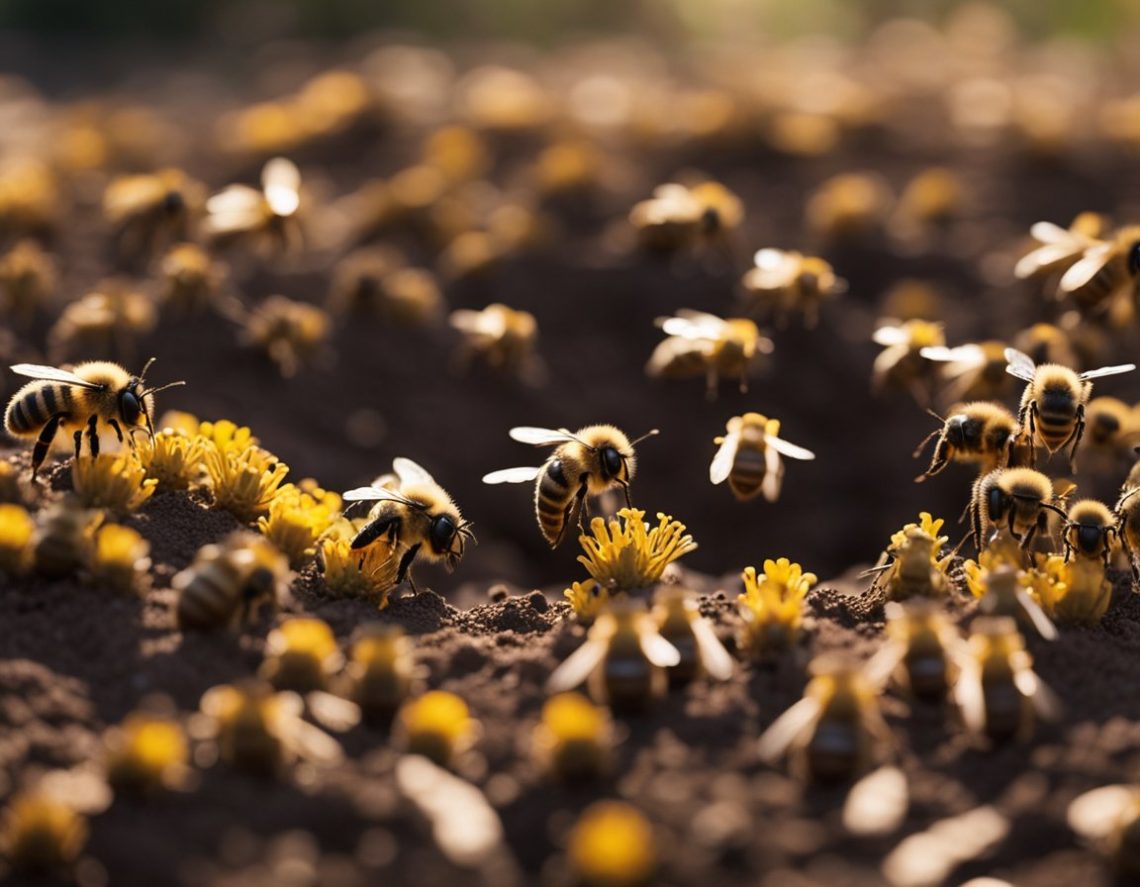
What Kind of Bees Live in the Ground: A Guide to Ground-Nesting Bees
Have you ever noticed bees buzzing around your lawn or garden? While many people associate bees with honey production and hives, not all bees live in colonies. In fact, some species of bees make their homes underground.
Ground-nesting bees are a diverse group of bees that prefer to burrow tunnels into the soil to create their nests. These bees can be found in a variety of habitats, from forests to grasslands to suburban lawns. While some ground bees are solitary creatures, others live in groups, with each female bee creating her own individual nest.
If you’re curious about the different types of bees that live in the ground, you’re in luck. In this article, we’ll explore the world of ground-nesting bees, including the different species you might encounter, their nesting habits, and how to identify their nests. Whether you’re a gardener, a nature enthusiast, or simply curious about the world around you, learning about ground bees can help you better appreciate the important role these insects play in our ecosystem.
Types of Ground-Nesting Bees

When it comes to ground-nesting bees, there are several different types that you may encounter. In this section, we’ll take a closer look at three of the most common types of ground-nesting bees: mining bees, sweat bees, and carpenter bees.
Mining Bees (Andrenidae)
Mining bees, also known as digger bees, are a type of ground-nesting bee that are often mistaken for wasps due to their similar appearance. However, mining bees are actually important pollinators that play a crucial role in the ecosystem. They are typically solitary bees, meaning that they do not live in colonies.
Mining bees are named for their habit of digging tunnels in the ground to create their nests. These tunnels can be up to a foot deep and are often found in areas with sandy soil. Once the tunnel is complete, the female mining bee will lay her eggs inside and provide them with a supply of pollen and nectar before sealing up the tunnel.
Sweat Bees (Halictidae)
Sweat bees are another type of ground-nesting bee that are commonly found in North America. They are named for their habit of landing on people and animals to drink their sweat, although they are not aggressive and rarely sting.
Sweat bees are typically small and metallic in color, with some species being green or blue. They are important pollinators and can often be found visiting flowers in gardens and meadows.
Like mining bees, sweat bees are solitary and create their nests in the ground. They may also nest in rotting wood or other natural materials.
Carpenter Bees (Xylocopinae)
Carpenter bees are a larger type of ground-nesting bee that are often mistaken for bumblebees. They are named for their habit of burrowing into wood to create their nests, which can cause damage to wooden structures.
Carpenter bees are important pollinators and can often be found visiting flowers in gardens and meadows. They are also important food sources for birds and other animals.
If you encounter carpenter bees nesting in your home or other wooden structures, it is important to take steps to remove them to prevent damage. However, if they are nesting in natural materials such as fallen logs, it is best to leave them be to help support the local ecosystem.
Habitats and Nesting Behaviors
Nesting Sites Selection
Ground-nesting bees are a diverse group of insects that can be found in various habitats. They prefer to nest in areas with well-drained soil that is easy to dig. Some species of ground-nesting bees prefer sandy soil, while others prefer soil with a higher clay content. They can be found in gardens, fields, meadows, and even along roadsides.
When selecting a nesting site, ground-nesting bees look for areas that are well-drained and have plenty of sunlight. They also prefer areas that are protected from strong winds and heavy rain. Some species of ground-nesting bees even prefer to nest in areas with a particular type of vegetation.
Nesting Process and Architecture
Ground-nesting bees create their nests by digging tunnels in the ground. The female bee will dig a tunnel that is usually less than a foot deep. She will then create several chambers along the tunnel, each of which will house an egg and a supply of pollen and nectar for the developing larva.
The female bee will lay an egg in each chamber and then seal it off with a partition made of mud or soil. Once the eggs are laid, the female bee will collect more pollen and nectar to create a food source for the developing larva.
Ground-nesting bees are solitary insects, which means that each female bee creates her own nest. However, it is not uncommon for several female bees to nest in the same area. This is because they are attracted to the same type of soil and vegetation.
Overall, ground-nesting bees are fascinating creatures that play an important role in our ecosystems. By understanding their nesting habitats and behaviors, we can take steps to protect them and ensure that they continue to thrive in our environment.




